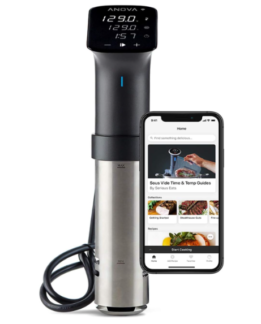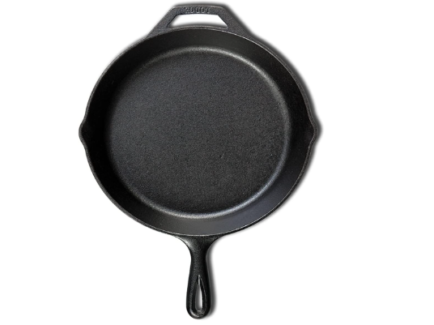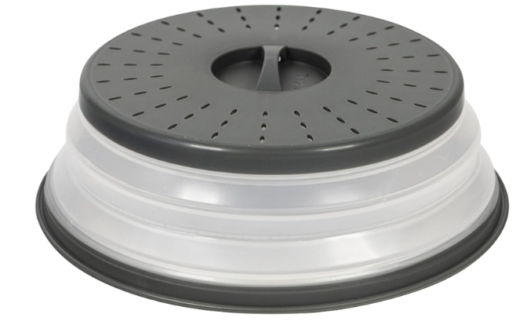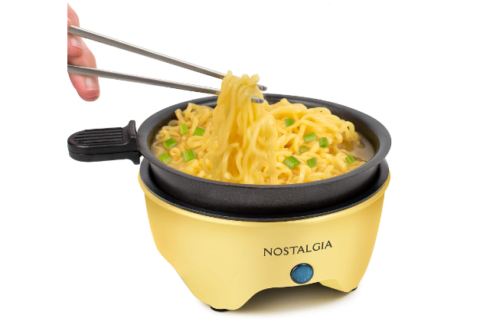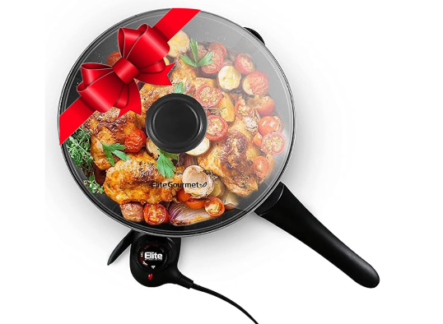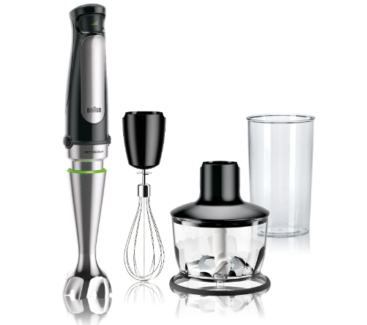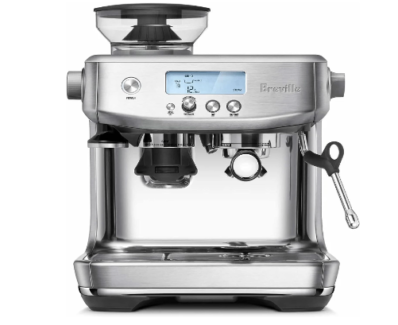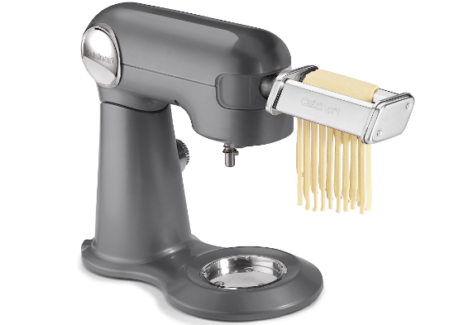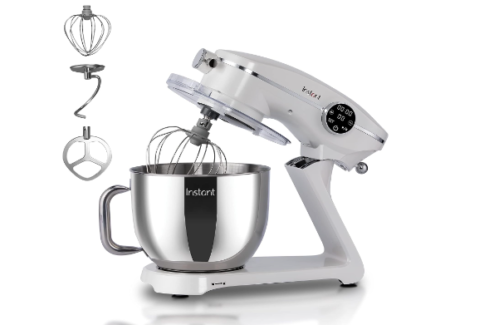A Japanese utility knife, also known as a petty knife,...
Read More
A utility knife is a versatile kitchen tool that is typically smaller than a chef’s knife but larger than a paring knife. It has a narrow, straight blade that is usually between 4 and 7 inches long and is typically serrated or non-serrated.
The shape and size of the blade make it ideal for a variety of kitchen tasks, from cutting small fruits and vegetables to trimming meat and slicing bread. The narrow blade also allows for greater precision and control when making cuts. Utility knives are a staple in many kitchens and are a useful tool for both professional chefs and home cooks alike.
What are utility knives for kitchen?
Utility knives for kitchen are versatile knives that can be used for a variety of tasks in the kitchen. They typically have a blade length between 4 to 7 inches and a straight or slightly curved blade. Some common uses for utility knives in the kitchen include:
- Cutting fruits and vegetables: Utility knives are great for slicing and chopping fruits and vegetables, particularly smaller or more delicate items like berries or tomatoes.
- Trimming meats: Utility knives can be used for trimming and preparing meats, particularly when a larger knife is too unwieldy for the job.
- Slicing sandwiches: The straight blade of a utility knife makes it ideal for slicing through sandwiches and other foods with bread.
- Cutting cheese: Utility knives are great for slicing through cheese, particularly soft or semi-soft varieties.
- Other tasks: Utility knives can also be used for a variety of other tasks in the kitchen, such as opening packages, trimming pastry, or removing the stem from a pepper.
Overall, utility knives are a versatile addition to any kitchen and can make many tasks easier and more efficient.
What knife is used as a utility knife?
As the name suggests, a utility knife is a versatile knife that can be used for a wide variety of tasks in the kitchen. Utility knives are typically smaller and lighter than chef’s knives and are designed to be easy to maneuver and control.
There are many different types of knives that can be considered utility knives, including:
- Paring knife: A small knife with a pointed blade that is ideal for peeling, trimming, and slicing small fruits and vegetables.
- Serrated utility knife: A knife with a serrated blade that is ideal for cutting through bread, tomatoes, and other soft foods.
- Straight utility knife: A knife with a straight blade that is ideal for slicing through meats, vegetables, and other foods.
- Japanese-style utility knife: A knife with a thin, lightweight blade that is ideal for precision tasks like filleting fish or slicing meat.
- All-purpose knife: A knife with a slightly curved blade that is designed to be used for a wide variety of tasks, including slicing, chopping, and dicing.
Overall, there is no one knife that is used exclusively as a utility knife. Instead, the term “utility knife” refers to any knife that can be used for a wide variety of tasks in the kitchen.
Are all utility knives the same?
No, not all utility knives are the same. There are different types of utility knives that vary in size, blade shape, blade material, handle material, and other features. Here are some common types of utility knives:
- Serrated utility knife: This type of utility knife has a blade with serrated teeth that are designed to saw through softer foods like bread, tomatoes, and citrus fruits without crushing or tearing them.
- Non-serrated utility knife: This type of utility knife has a straight, sharp blade that is ideal for precise cutting and detail work. It can be used for a wide range of kitchen tasks, from trimming meat and peeling vegetables to slicing through sandwiches and bagels.
- Folding utility knife: This type of utility knife has a blade that folds into the handle for safe and easy storage. It is often used for outdoor activities like camping and hiking, as well as for DIY projects and other tasks that require a portable cutting tool.
- Multi-purpose utility knife: This type of utility knife has additional features, such as a bottle opener, can opener, and screwdriver, that make it a versatile tool for a variety of tasks.
Overall, the type of utility knife that is best for you will depend on the tasks you need it for and your personal preferences.
Is a utility knife good for cutting meat?
A utility knife can be a good tool for cutting meat, depending on the type of meat and the specific utility knife you are using. Utility knives are generally smaller and lighter than chef’s knives, which can make them easier to maneuver and control when cutting through meat.
When choosing a utility knife for cutting meat, look for a blade length of at least 5 to 6 inches, and consider the blade shape as well. A straight blade is good for slicing through meat, while a serrated blade is better for cutting through tougher cuts of meat, such as roasts or steaks.
However, keep in mind that utility knives are not necessarily designed for heavy-duty meat cutting tasks, such as deboning or breaking down large cuts of meat. For these tasks, a larger, heavier knife like a butcher’s knife or a cleaver may be more appropriate.
Overall, a utility knife can be a useful tool for cutting meat in a home kitchen, but it is important to choose the right knife for the task at hand and to use the knife safely and appropriately.
What is the best use for utility knife?
A utility knife is a versatile kitchen tool that can be used for a variety of tasks. Here are some of the best uses for a utility knife:
- Cutting small fruits and vegetables: A utility knife is perfect for cutting small fruits and vegetables like strawberries, mushrooms, and cherry tomatoes.
- Trimming meat: A utility knife can be used to trim excess fat and remove bones from meat.
- Slicing sandwiches: A utility knife is great for slicing through sandwiches and bagels.
- Carving meat: While a utility knife may not be as large as a carving knife, it can still be used to carve smaller cuts of meat like chicken or pork loin.
- Peeling and trimming produce: A utility knife can be used to peel and trim produce like potatoes and carrots.
- Cutting cheese: A utility knife can be used to cut soft and hard cheeses with ease.
- Cutting bread: A utility knife can be used to slice through bread without crushing the soft interior.
In general, a utility knife is a great all-purpose kitchen tool that can handle a variety of tasks. Its smaller size and sharp blade make it perfect for precision cuts and detail work.
What not to do with utility knife?
While a utility knife is a versatile tool that can handle a variety of kitchen tasks, there are a few things that you should avoid doing with it to ensure your safety and to prevent damage to the knife:
- Don’t use the knife to pry open cans or containers: The blade of a utility knife is not designed for prying, and using it in this way can cause the blade to bend or break.
- Don’t use the knife to cut through hard or frozen foods: While a utility knife can handle soft and small fruits and vegetables, it is not designed for cutting through hard or frozen foods. This can damage the blade and make it dull more quickly.
- Don’t use the knife to cut bones: A utility knife is not designed for cutting through bones. Attempting to do so can damage the blade and make it unsafe to use.
- Don’t use the knife on a hard surface: Always use a cutting board when using a utility knife. Using the knife on a hard surface like a countertop or plate can damage the blade and make it dull more quickly.
- Don’t leave the knife soaking in water: Leaving a utility knife soaking in water for an extended period of time can cause the handle to warp and can damage the blade.
By avoiding these actions, you can help to ensure the longevity and safety of your utility knife.
What is the difference between a kitchen knife and utility knife?
The main difference between a kitchen knife and a utility knife is their size and intended use. A kitchen knife is a larger knife typically used for heavier cutting tasks like chopping vegetables or slicing meat. It typically has a blade that is 6 to 10 inches long and a wider, heavier blade that allows for more leverage when making cuts.
On the other hand, a utility knife is a smaller, more versatile knife that can handle a variety of tasks. It typically has a blade that is 4 to 7 inches long and a narrow, straight blade that is either serrated or non-serrated. The narrow blade and smaller size of a utility knife make it ideal for precision cuts and detail work like cutting small fruits and vegetables, peeling and trimming produce, and slicing through sandwiches and bagels.
While both kitchen knives and utility knives are important tools in any kitchen, they each have their own unique uses and strengths. A kitchen knife is great for heavy-duty tasks that require more power and leverage, while a utility knife is perfect for smaller, more detailed tasks that require precision and control.
What are the two types of utility knives?
There are generally two types of utility knives: serrated and non-serrated.
A serrated utility knife has a blade with teeth that are designed to grip and saw through softer foods like bread, tomatoes, and citrus fruits without crushing or tearing them. The serrated blade is also useful for cutting through tougher skins and crusts. Serrated utility knives are often referred to as bread knives because they are commonly used to slice through loaves of bread.
A non-serrated utility knife has a straight, sharp blade that is ideal for precise cutting and detail work. It can be used for a wide range of kitchen tasks, from trimming meat and peeling vegetables to slicing through sandwiches and bagels.
Both types of utility knives are useful in the kitchen, but the choice between serrated or non-serrated will depend on the specific task at hand. If you are primarily cutting bread or other soft foods, a serrated utility knife will likely be more useful. If you need a more versatile knife for a variety of kitchen tasks, a non-serrated utility knife may be the better choice.
Is utility knife and cutter the same?
While the terms “utility knife” and “cutter” are sometimes used interchangeably, they generally refer to different types of knives.
A utility knife typically has a narrow, straight blade that is either serrated or non-serrated. It is a versatile kitchen tool that can be used for a variety of tasks, from trimming meat and peeling vegetables to slicing through sandwiches and bagels.
A cutter, on the other hand, is a tool that is designed for cutting materials like paper, cardboard, and plastic. It typically has a larger, heavier blade that is held in place by a handle and is often retractable for safety. Cutters can be used in a variety of settings, from crafting and DIY projects to industrial and construction applications.
While there may be some overlap in the tasks that a utility knife and a cutter can perform, they are generally designed for different purposes and are not interchangeable.
What is the best angle for utility knife?
The best angle for a utility knife will depend on the specific knife and the task you are using it for. In general, most utility knives have a blade angle of around 20 degrees, which is a good balance between sharpness and durability.
However, for tasks that require a more delicate touch, such as filleting fish or trimming vegetables, you may want to sharpen the blade to a slightly narrower angle of around 15 degrees. This will give you a sharper edge that can make precision cuts.
On the other hand, for tasks that require more durability, such as cutting through tough meat or bone, you may want to sharpen the blade to a slightly wider angle of around 25 degrees. This will give you a more durable edge that can withstand more abuse.
Overall, the best angle for a utility knife will depend on the specific knife and the task you are using it for. Experiment with different angles to find the one that works best for you.
Factors to consider when choosing the best utility knife kitchen
When choosing the best utility knife for your kitchen, there are several factors to consider. Here are some of the most important factors:
- Blade Material: Look for a utility knife with a high-quality blade material, such as stainless steel or high-carbon steel. These materials are durable, resist corrosion, and hold a sharp edge.
- Blade Length: The blade length of a utility knife can vary from 4 to 7 inches. Consider the types of tasks you will be using the knife for and choose a blade length that is suitable for those tasks.
- Blade Shape: Choose a blade shape that is suitable for the types of cuts you will be making. A straight blade is good for slicing and chopping, while a serrated blade is better for cutting through bread or other soft foods.
- Handle Material: Look for a utility knife with a comfortable, ergonomic handle that provides a secure grip. Common handle materials include plastic, wood, and metal.
- Weight and Balance: Choose a utility knife that feels balanced and comfortable in your hand. A knife that is too heavy or too light can be difficult to control.
- Brand and Price: Consider the reputation of the brand and the price of the knife. While a high-quality knife may be more expensive, it will also last longer and perform better over time.
Overall, the best utility knife for your kitchen will depend on your personal preferences and the types of tasks you will be using the knife for. Consider the factors above to choose a utility knife that is comfortable, durable, and effective.
Which type of utility knife is good for cutting thin?
If you are looking for a utility knife that is good for cutting thin slices of food, such as meats, vegetables, or fruits, then a Japanese-style utility knife may be a good choice. These knives are typically thin and lightweight, which makes them ideal for precision tasks.
The blade of a Japanese-style utility knife is typically made of high-carbon steel or a harder, more durable stainless steel. The blade is ground to a very fine edge, which allows it to slice through food with ease. The blade is also typically very sharp, which makes it ideal for cutting thin slices.
Japanese-style utility knives are available in a variety of blade lengths, typically ranging from 5 to 7 inches. A shorter blade length can be easier to control, while a longer blade length can be more versatile for cutting larger foods.
Overall, if you need a utility knife for cutting thin slices of food, then a Japanese-style utility knife can be a good choice. However, it’s important to choose a knife that feels comfortable in your hand and that is well-suited to the specific tasks you will be using it for.
What is pros and cons of utility knife kitchen?
Pros of a Utility Knife Kitchen:
- Versatility: One of the main advantages of a utility knife is its versatility. With a utility knife, you can perform many different tasks, without having to switch between multiple knives.
- Maneuverability: Utility knives are typically smaller and lighter than chef’s knives, which can make them easier to maneuver and control.
- Easy to Store: Since utility knives are smaller and lighter than other kitchen knives, they are easier to store in a knife block or drawer, and they take up less space on the countertop.
- Affordability: Utility knives tend to be more affordable than other types of kitchen knives, which can make them a good choice for people on a budget.
Cons of a Utility Knife Kitchen:
- Limited Uses: Although utility knives can be used for a wide variety of tasks, they may not be as well-suited to certain tasks as other knives. For example, a chef’s knife may be better for chopping large quantities of vegetables or meat.
- Limited Cutting Capacity: Utility knives have shorter blades than other kitchen knives, which can limit their cutting capacity.
- Less Comfortable: Utility knives tend to be less comfortable to use than other types of kitchen knives, especially for people with larger hands or who need to perform heavy-duty cutting tasks.
- Less Durable: Utility knives are typically made from less durable materials than other types of kitchen knives, which means they may need to be replaced more frequently.
How to use utility knife kitchen safely
To use a utility knife kitchen safely, follow these tips:
- Keep the blade sharp: A dull blade can slip and cause injury. Make sure to keep your utility knife sharpened.
- Use a cutting board: Always use a cutting board when using a utility knife. This will help protect the blade and prevent the knife from slipping.
- Use a firm grip: Hold the handle of the knife with a firm grip and keep your fingers away from the blade.
- Use a rocking motion: When using a utility knife to slice, use a gentle rocking motion rather than a chopping motion. This will help prevent the knife from slipping.
- Cut away from your body: Always cut away from your body, and never towards yourself.
- Store the knife safely: Store the utility knife in a knife block or on a magnetic strip to keep the blade protected and to prevent it from accidentally causing injury.
By following these tips, you can safely and effectively use a utility knife kitchen for all your kitchen tasks.
How to clean utility knife kitchen
Cleaning your utility knife kitchen is important to maintain its sharpness and prevent any buildup of bacteria or food particles. Here are the steps to clean your utility knife kitchen:
- Rinse the knife under running water: Hold the knife under running water to remove any visible debris or food particles.
- Wash with dish soap and water: Use a gentle dish soap and a sponge or dishcloth to wash the blade and handle of the knife. Be sure to clean both sides of the blade and any crevices or handles.
- Rinse with clean water: Rinse the knife under clean running water to remove any soap residue.
- Dry the knife with a clean towel: Use a clean, dry towel to wipe the blade and handle of the knife dry. Be sure to dry both sides of the blade and any crevices or handles.
- Store the knife properly: Once the knife is dry, store it in a knife block or on a magnetic strip to keep it safe and accessible.
Note: Do not put your utility knife kitchen in the dishwasher as the high heat and harsh detergent can damage the blade and handle over time.
How to sharpen utility knife kitchen
Sharpening your utility knife kitchen is important to maintain its cutting ability and keep it working efficiently. Here are the steps to sharpen your utility knife kitchen:
- Choose a sharpening tool: There are a variety of sharpening tools available, including whetstones, sharpening rods, and electric sharpeners. Choose a tool that you feel comfortable using and that is appropriate for your knife.
- Determine the angle: Most utility knives have a 20-degree angle, but it’s important to check the manufacturer’s instructions to determine the correct angle for your knife.
- Hold the knife correctly: Hold the sharpening tool securely with one hand, and hold the knife with the other hand at the correct angle.
- Sharpen the blade: Using a smooth, even motion, slide the blade along the sharpening tool from the base to the tip. Be sure to maintain the correct angle and apply consistent pressure.
- Repeat on the other side: Flip the knife over and repeat the process on the other side of the blade.
- Test the sharpness: Once you have finished sharpening, test the sharpness of the blade by slicing through a piece of paper or a tomato.
- Hone the blade: After sharpening, use a honing steel to straighten and polish the blade. Hold the honing steel vertically, with the tip resting on a cutting board, and slide the blade along the steel from the base to the tip.
Note: It’s important to sharpen your utility knife kitchen regularly to maintain its sharpness and prevent any damage to the blade.
How to maintain utility knife kitchen properly
Proper maintenance of your utility knife kitchen is important to ensure its longevity and maintain its cutting ability. Here are some tips for maintaining your utility knife kitchen:
- Keep it clean: After each use, clean the blade and handle of the knife with warm, soapy water and dry it thoroughly with a clean towel.
- Store it properly: Store your utility knife kitchen in a knife block, on a magnetic strip, or in a protective sheath to prevent the blade from getting damaged.
- Sharpen it regularly: Sharpen your utility knife kitchen regularly to maintain its cutting ability. Use a sharpening tool appropriate for your knife and follow the manufacturer’s instructions for the correct angle and technique.
- Hone the blade: Use a honing steel to straighten and polish the blade regularly, even between sharpenings.
- Avoid cutting hard objects: Do not use your utility knife kitchen to cut hard objects such as bones, frozen food, or metal as it can damage the blade.
- Handle with care: Handle your utility knife kitchen with care and avoid dropping it or using it improperly. Avoid twisting or prying with the blade, as this can damage the edge.
By following these simple maintenance tips, you can keep your utility knife kitchen in top condition and ensure that it will last for years to come.
Troubleshooting about utility knife kitchen
Here are some common issues you may encounter with your utility knife kitchen, along with troubleshooting tips:
- Dull blade: If your utility knife kitchen is not cutting properly, it may have a dull blade. Sharpen the blade using a sharpening tool appropriate for your knife and follow the manufacturer’s instructions for the correct angle and technique.
- Blade damage: If the blade is damaged or chipped, it may need to be replaced. Contact the manufacturer or a professional knife sharpener to have the blade repaired or replaced.
- Rust: If your knife has rust spots, use a rust remover solution and a soft-bristled brush to gently remove the rust. Dry the knife thoroughly before storing it.
- Loose handle: If the handle is loose, tighten the screws that hold the handle in place using a screwdriver. If the handle is damaged, contact the manufacturer for a replacement.
- Uneven edge: If the edge of the blade is uneven, it may need to be reshaped. Use a sharpening tool appropriate for your knife and follow the manufacturer’s instructions for the correct angle and technique.
By troubleshooting these issues, you can keep your utility knife kitchen in good condition and ensure that it performs as expected. If you encounter any problems that cannot be resolved through troubleshooting, contact the manufacturer or a professional knife sharpener for assistance.
Are utility knives useful?
Yes, utility knives can be very useful tools in the kitchen. They are versatile and can be used for a wide variety of tasks, from slicing fruits and vegetables to cutting meats and cheeses. Utility knives are typically smaller and lighter than chef’s knives, which can make them easier to maneuver and control.
One of the main advantages of a utility knife is its versatility. With a utility knife, you can perform many different tasks, without having to switch between multiple knives. This can save time and effort in the kitchen, as well as reducing the need for storage space for multiple knives.
Another advantage of a utility knife is its size and weight. Because utility knives are typically smaller and lighter than chef’s knives, they can be easier to handle and control, especially for people with smaller hands or less upper body strength.
Overall, a utility knife can be a very useful tool in the kitchen, especially for people who do not require a large, heavy-duty chef’s knife for their cooking needs. Whether you are slicing vegetables or trimming meat, a good quality utility knife can make the task easier and more efficient.
Related Posts
Best Utility Kitchen Knife Every Home Cook Needs
As the younger brother of a standard chef’s knife, a...
Read MoreThe Best Japanese Knives You Should Have In The Kitchen
Knives are the foundation of any chef’s arsenal. If you’re...
Read MoreWhy Trust Us
You will find what you are looking for at Jody's Bakery. From classic to luxury brands, you'll find both. We will help you to select appliances that fit your needs, budget and lifestyle. Whether you want to stop by to learn more — or plan to make a major purchase — we’ll treat you like family and assist you every step of the way. Shop with us today to receive friendly and experienced help along the way.









